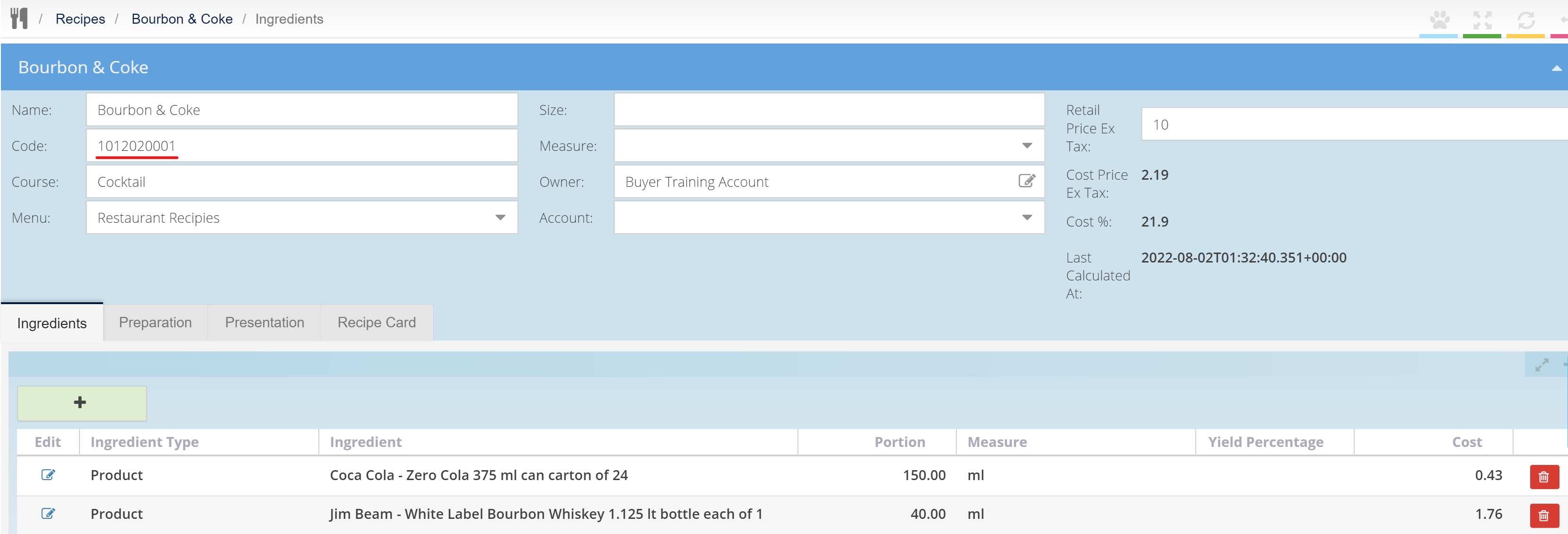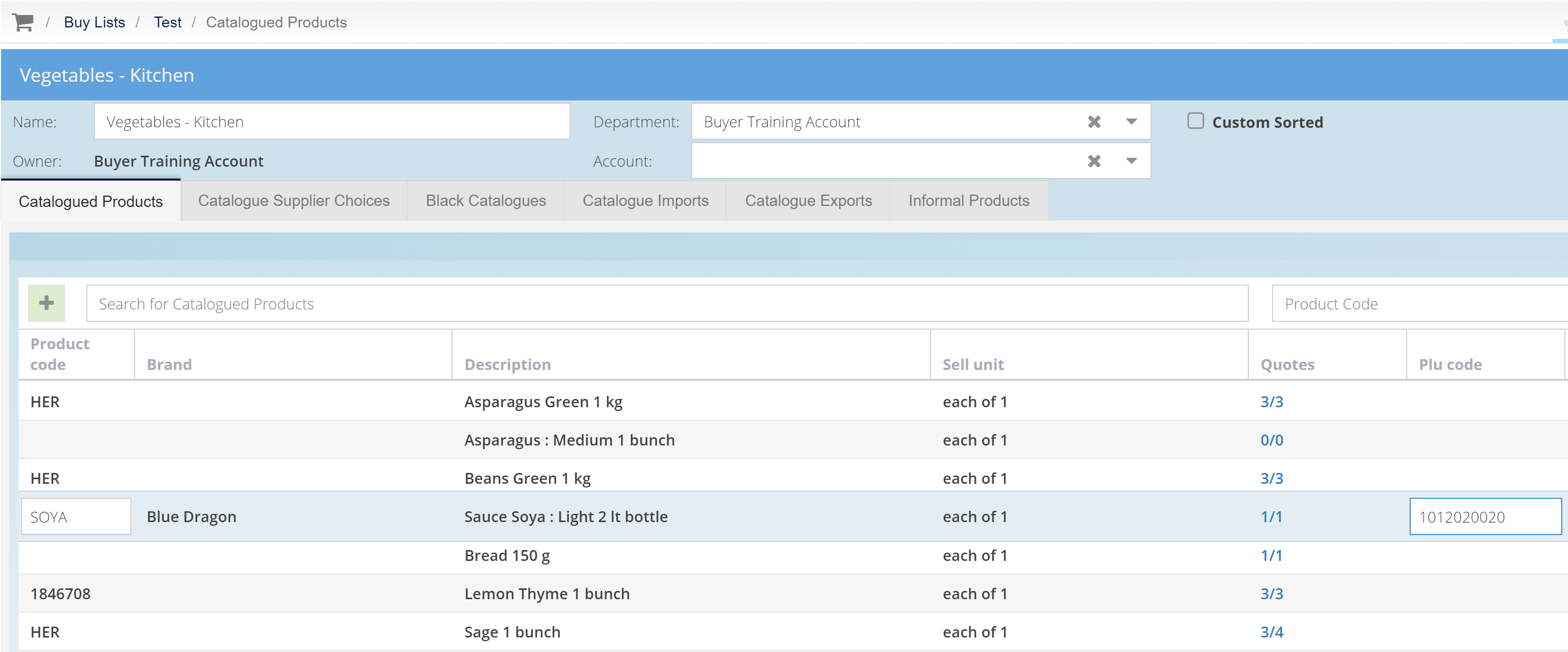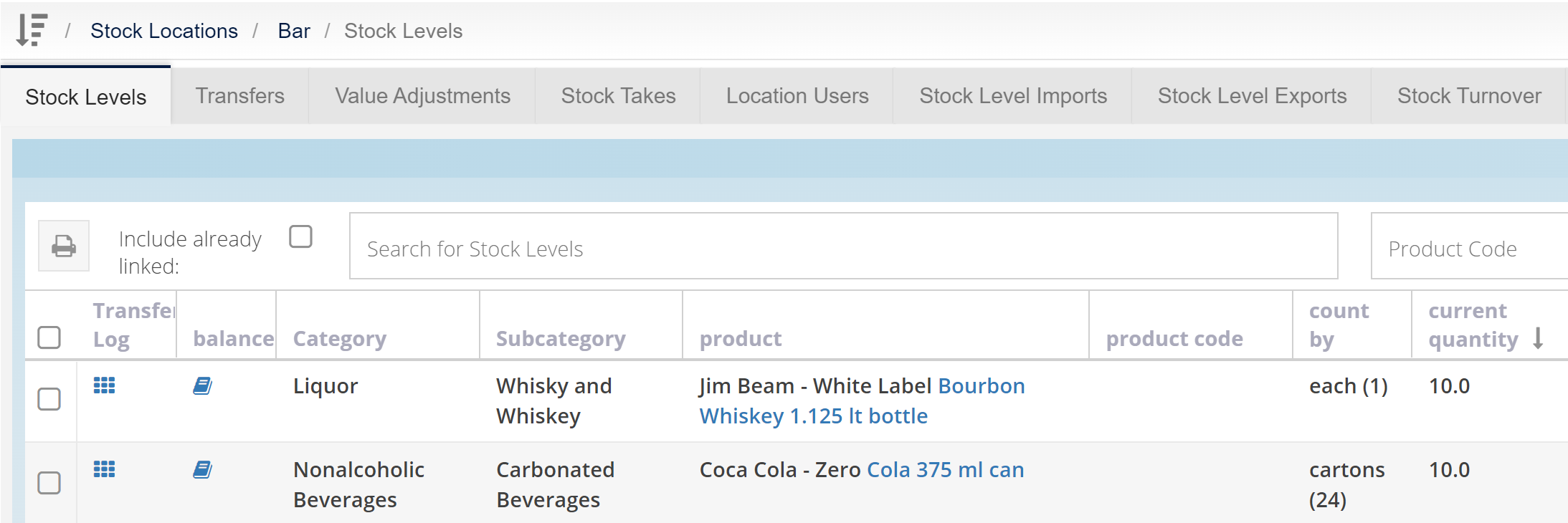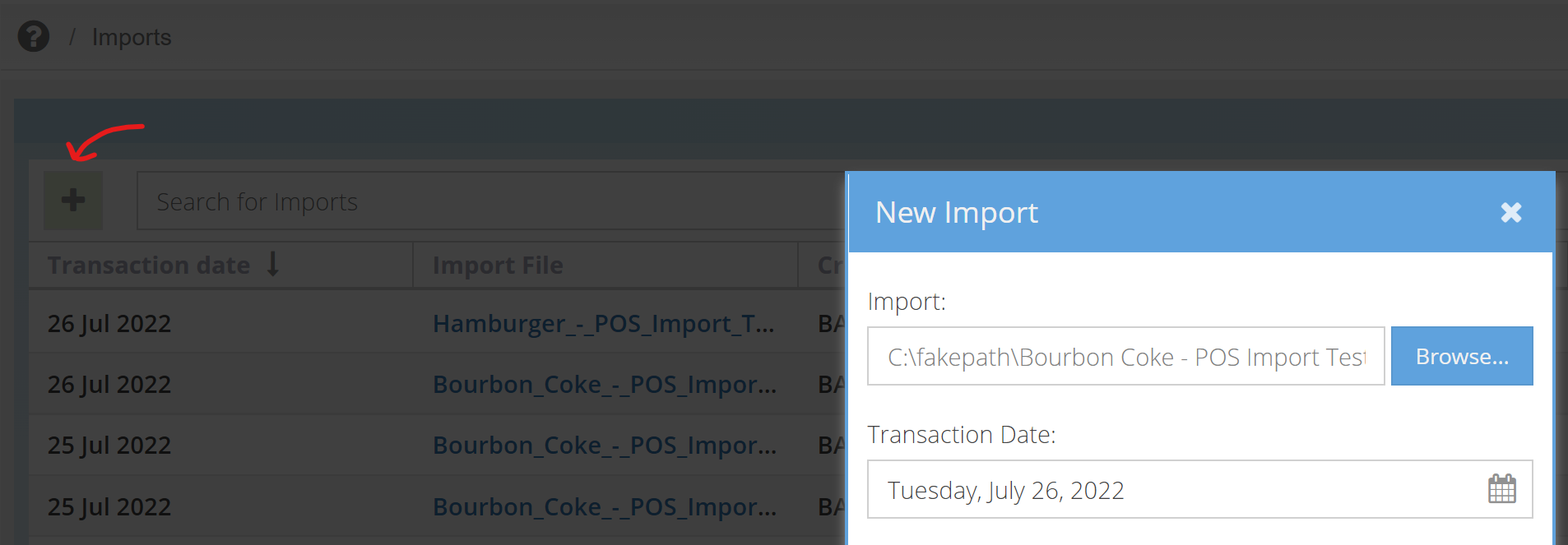Understand how to import successfully to the Point of Sale (POS) module.
Importing to the Point of Sale module will create a Sale that upon success performs a Sales Transfer that decrements certain items from Inventory locations. Direct integration via API can also be used if supported.
Before a Sale can be successfully created via the POS module, you need to have the following:
-
Point of Sale paid module enabled/included
-
Inventory paid module enabled/included
-
Inventory locations set up with the stock items loaded
-
Either the stock items need to have enough quantity to decrement what is in the sale, or you have allowed negative stock levels
-
-
POS Outlet Code is linked to an Inventory Stock Location
-
A unique PLU code is set to correlate with your stock item(s)
-
This is either set up in the Buy List or as a Recipe to combine multiple items as a sellable product
-
-
Price set for your product/recipe
Setting your unique PLU codes
For recipes, I have created a simple 'Bourbon & Coke' recipe and entered in '1012020001' as the 'Code':

Note - For each Recipe you create, this will automatically add a product to your generic Buy List. Do not change the PLU code for the product in the Buy List for this product, as it will not successfully change the PLU code.
Same recipe added to the 'Buyer Training Account Catalogue' for the 'Buyer Training Account' organisation:

For Buy Lists, where you have specific products that should be decremented/sold as is, you can set the PLU code here:

For creating a sale for the 'Bourbon & Coke' recipe, I have confirmed the stock items are in the location and there is enough quantity to decrement:

Importing via file
Now that everything is set up, I can perform a POS Sale via import.
-
First, download the POS Import Format template here as a CSV.
-
Update the values and information based on what was sold:
-
The 'check_number' field is optional. This is used so that you can find the actual check number is in your POS system.
-
The transaction date should be in either YYY-MM-DD or MM/DD/YYY format
-
-
Save your file as a CSV
-
On PurchasePlus, navigate to [Point Of Sale], [Imports]
-
Click the green [+] button and find your file
-
Click [Save] and your Sale will begin to process
-
First, the Sale will move into an 'Open' state before being processed
-
Once the file has finished processing, it will move into either a 'Failed' or 'Imported' state
-
If it is 'Imported', it still needs to be approved
-
Open the import using the [Eye] button
-
Click the green [Approve] button in the bottom-right to approve it
-
This will now create an 'Open' Sale which can be viewed under [Point Of Sale], [Sales]
-
To complete the transfer, open the Sale
-
Now click the yellow [Transfer] button in the bottom-right to complete
First, download the POS Import Format template here as a CSV.
Update the values and information based on what was sold:

- The 'check_number' field is optional. This is used so that you can find the actual check number is in your POS system.
-
The transaction date should be in either YYY-MM-DD or MM/DD/YYY format
Save your file as a CSV
On PurchasePlus, navigate to [Point Of Sale], [Imports]
Click the green [+] button and find your file

Click [Save] and your Sale will begin to process
First, the Sale will move into an 'Open' state before being processed
Once the file has finished processing, it will move into either a 'Failed' or 'Imported' state
If it is 'Imported', it still needs to be approved
Open the import using the [Eye] button
Click the green [Approve] button in the bottom-right to approve it
This will now create an 'Open' Sale which can be viewed under [Point Of Sale], [Sales]
To complete the transfer, open the Sale
Now click the yellow [Transfer] button in the bottom-right to complete
If there are failed lines, there will be error messages. If you need help on troubleshooting POS issues, check out the Troubleshooting POS issues guide here.
Sending POS Sales Data via API
Sales data can be sent directly to the organisation via POS API. There are 4 steps involved: Creating a Sale, Adding Line Items, Initiating the Transfer and Checking Transfer Status.
This bypasses the 'Import' area and does not need the Import to be approved. It also bypasses the need for users to manually 'Transfer' the Sale, as that is initiated via the API as well. Optionally, you can skip the 'Initiating the Transfer' step to allow users to manually Transfer the Sale when ready.

